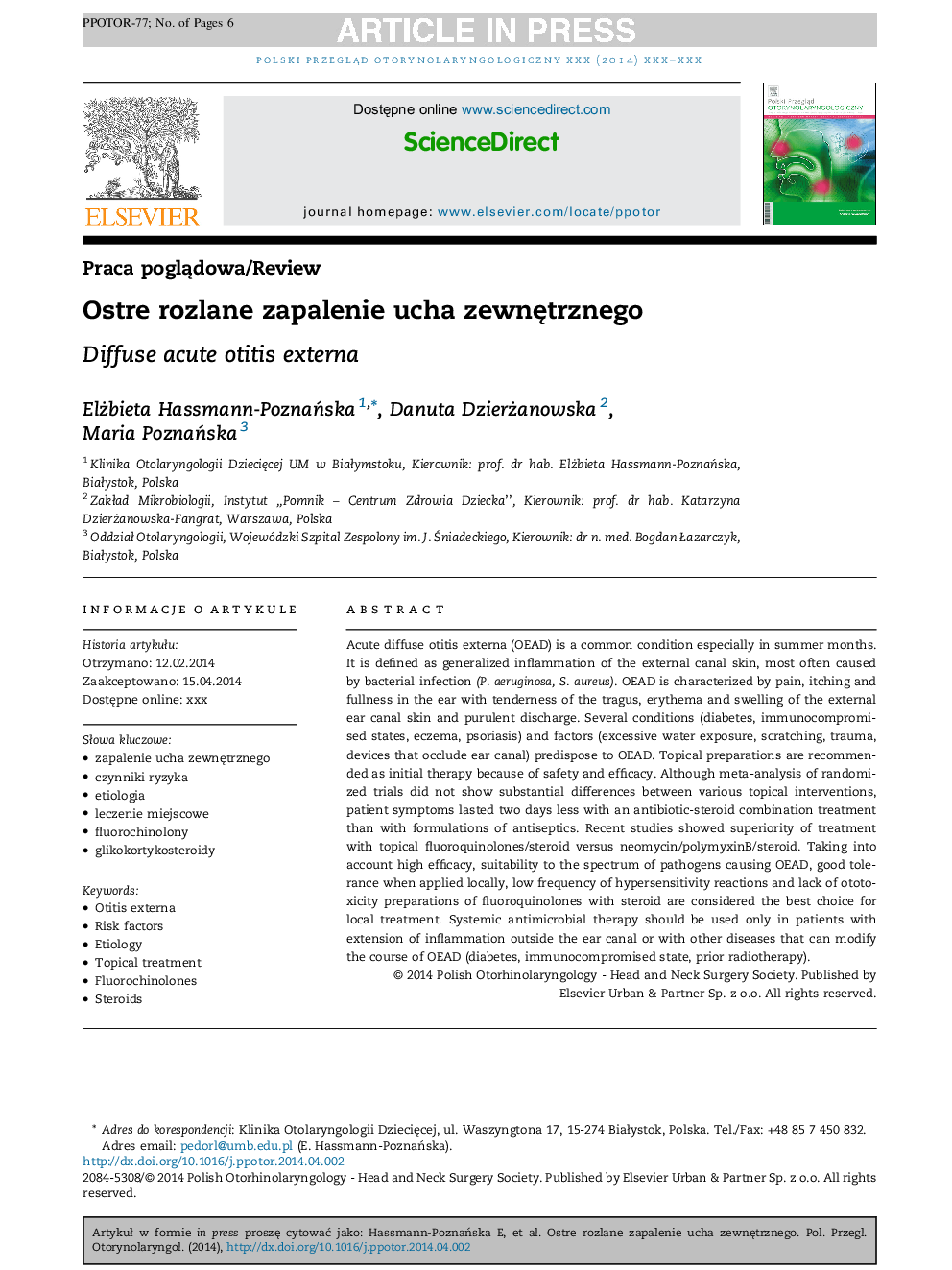| Article ID | Journal | Published Year | Pages | File Type |
|---|---|---|---|---|
| 3171871 | Polski Przegląd Otorynolaryngologiczny | 2014 | 6 Pages |
Abstract
Acute diffuse otitis externa (OEAD) is a common condition especially in summer months. It is defined as generalized inflammation of the external canal skin, most often caused by bacterial infection (P. aeruginosa, S. aureus). OEAD is characterized by pain, itching and fullness in the ear with tenderness of the tragus, erythema and swelling of the external ear canal skin and purulent discharge. Several conditions (diabetes, immunocompromised states, eczema, psoriasis) and factors (excessive water exposure, scratching, trauma, devices that occlude ear canal) predispose to OEAD. Topical preparations are recommended as initial therapy because of safety and efficacy. Although meta-analysis of randomized trials did not show substantial differences between various topical interventions, patient symptoms lasted two days less with an antibiotic-steroid combination treatment than with formulations of antiseptics. Recent studies showed superiority of treatment with topical fluoroquinolones/steroid versus neomycin/polymyxinB/steroid. Taking into account high efficacy, suitability to the spectrum of pathogens causing OEAD, good tolerance when applied locally, low frequency of hypersensitivity reactions and lack of ototoxicity preparations of fluoroquinolones with steroid are considered the best choice for local treatment. Systemic antimicrobial therapy should be used only in patients with extension of inflammation outside the ear canal or with other diseases that can modify the course of OEAD (diabetes, immunocompromised state, prior radiotherapy).
Related Topics
Health Sciences
Medicine and Dentistry
Dentistry, Oral Surgery and Medicine
Authors
Elżbieta Hassmann-PoznaÅska, Danuta Dzierżanowska, Maria PoznaÅska,
